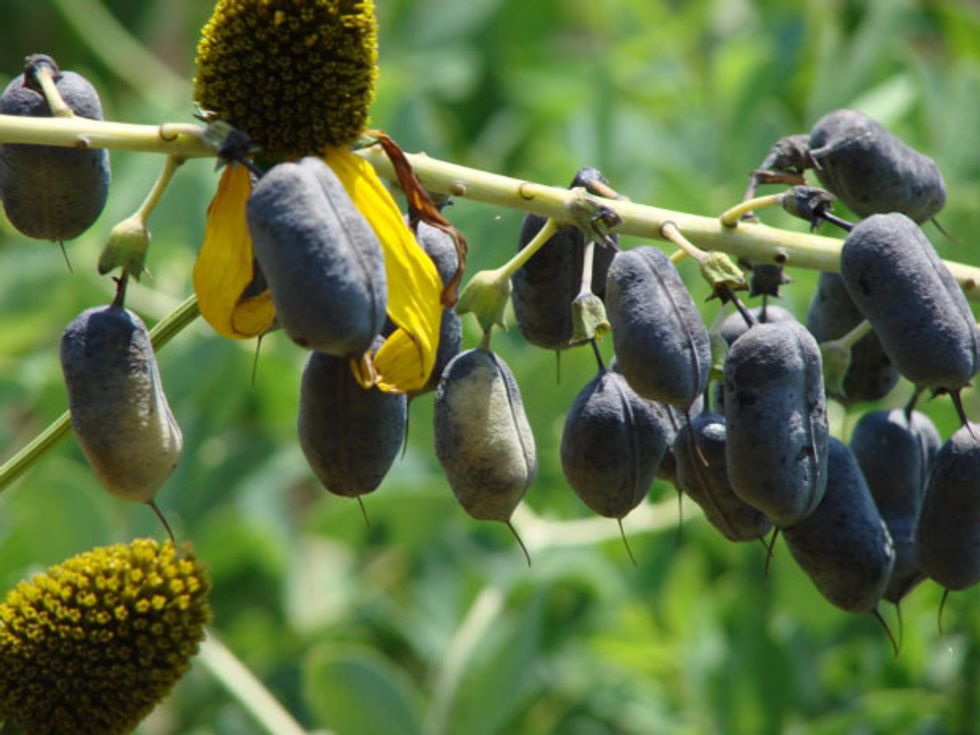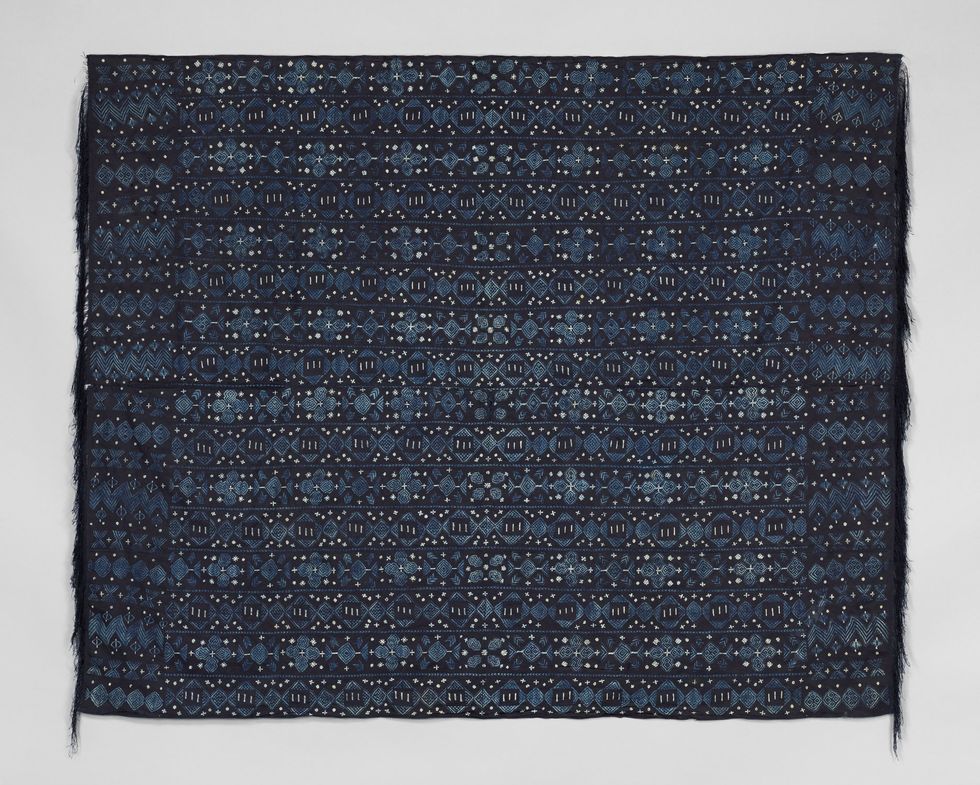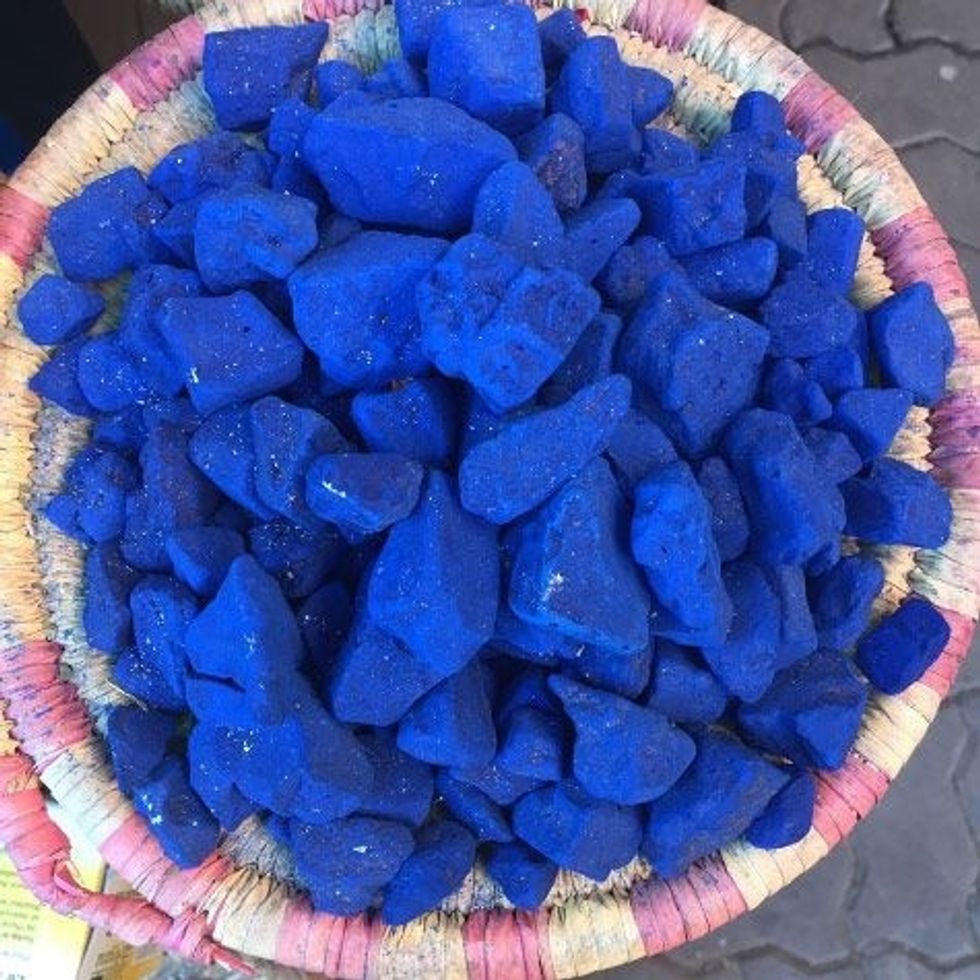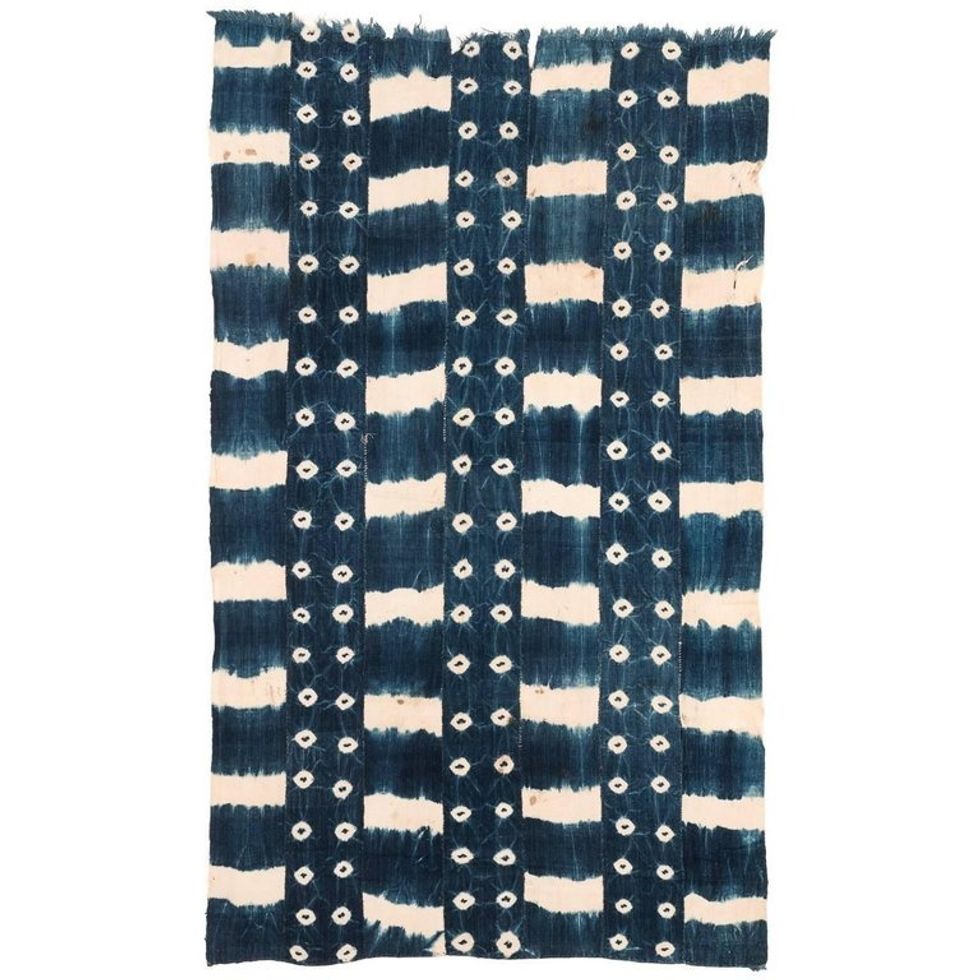Indigo is one of the oldest and most prized natural dyes used in textile production. With a rich history spanning continents—from South America to Asia—indigo holds universal appeal. So, when we set out to create our Bohemian Blues collection, we looked to this history for inspiration.
NATURALLY GORGEOUS
Indigo has historically been cultivated from the genus Indigofera, which is native to the Indian subcontinent. Its natural dyes reside in the leaves of these tropical plants. Other natural indigo sources include mollusks, particularly the Murex sea snails.
INDIGO THROUGH THE AGES
A stitch resist indigo wrapper from Senegal, Courtesy of The Metropolitan Museum of Art
The oldest traces of the pigment, dating back 6,200 years, were discovered in Peru in 2009. India, however, remains the place most popularly linked to this historic blue. In the Greco-Roman era, India served as the primary supplier of indigo. The link between India and indigo is, in fact, reflected in the Greek word for the dye, indikón.
Throughout the Middle Ages, indigo remained a rare commodity in Europe due to expensive import duties imposed by Persian, Levantine, and Greek middlemen. The late 15th century ushered in a period of direct trade between Europe and Asia, as well as the establishment of European plantations in tropical climates. Indigo flooded the European market.
A GLOBAL SYMBOL
Courtesy of Madeleine Weinrib
In West Africa, indigo became an essential ingredient in textile weaving traditions. The Mandinka of Mali were particularly well-known for their indigo dyeing expertise. For the Tuareg nomads, indigo-dyed cloths signified wealth.
Japanese indigoes became especially important during the Edo period (1603-1868). Commoners were banned from wearing silk, thus leading to an increase in cotton cultivation and indigo dyeing.
Indigo was introduced to North America in the late 1700s. Eliza Lucas Pinckney, a young female plantation operator, proved that indigo could be successfully cultivated in South Carolina. It quickly became the colony’s second most important cash crop.







